We have recently received several different GeForce cards covering a range of performance levels, prices, and cooler configurations. Over the next couple of weeks we’ll be taking a look at such GTX 670 and GTX 680 cards from Asus, EVGA, MSI, and Zotac. NVIDIA is going through a period of tight control over their partners’ designs, but this hasn’t stopped their partners from putting their own unique touches on their cards.
Nowhere is this embodied more than with our first card, EVGA’s GeForce GTX 680 Classified. In EVGA’s product hierarchy the Classified is their top of the line product, where they typically go all-out to make customized products to scratch the itch of overclockers and premium buyers alike. The GTX 680 Classified in turn is EVGA’s take on a premium GTX 680,What has EVGA seen fit to do with their fully-custom GTX 680, and does it live up to the hype and the price tag that comes with the Classified name? .
NVIDIA usually turns out solid reference card designs. For their high-end single-GPU cards NVIDIA typically uses balanced designs that are reasonably quiet, reasonably cool, and have some degree of overclocking potential. On the other hand NVIDIA also tends to go conservative in some ways, with NVIDIA favoring blowers so that their reference cards work in most cases, and rarely overbuilding their cards in order to keep the manufacturing cost of the card down.
This is where custom cards come in. NVIDIA’s reference which leads to their partners creating custom products not only to differentiate themselves from each other, but to target specific niches that the reference design doesn’t do a good job of covering. Even just replacing the cooler while maintaining the reference board – what we call a semi-custom card – can have a big impact on noise, temperatures, and can improve overclocking. But at the end of the day there’s only so much you can do with NVIDIA’s reference boards, particularly when it comes to form factors and overclocking. This leads us to fully-custom cards.
Crysis, Metro, DiRT 3, Shogun 2, & Batman
Since the GTX 680 Classified doesn’t bring anything new to the table architecturally, we’ll keep our commentary on its stock performance brief. At stock it’s much like any other overclocked GTX 680 (factory or otherwise), with the only real room for differentiation being the greater amount of RAM and the higher power target. In practice the greater amount of RAM doesn’t make much of a difference in our single-GPU tests, as that much RAM is far more beneficial for the ultra-high resolutions of multi-monitor gaming, at which point you’re going to need a second card to provide the necessary horsepower.
The higher default power target on the other hand is quite interesting. The GTX 680 Classified will hit its top boost bin almost all of the time thanks to the generous power target, something the reference GTX 680 can have trouble with even at stock. So although reference cards can be overclocked to this level, it doesn’t necessarily mean they’ll match the GTX 680 Classified’s boost clocks in that state.
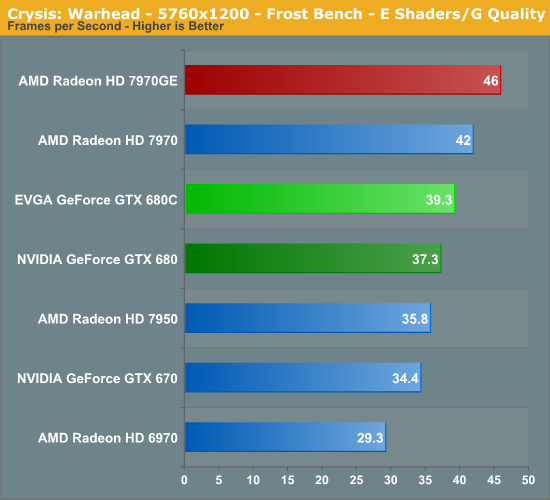

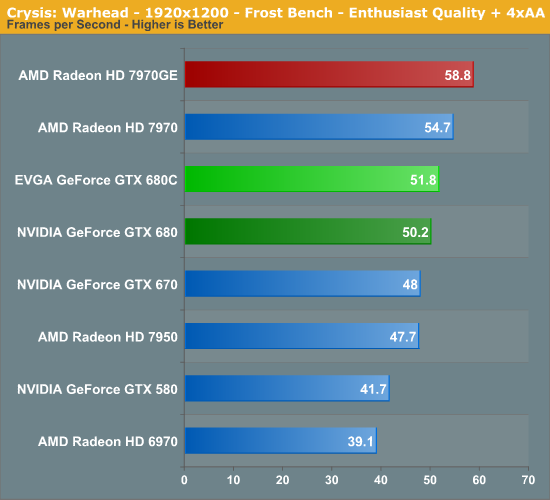
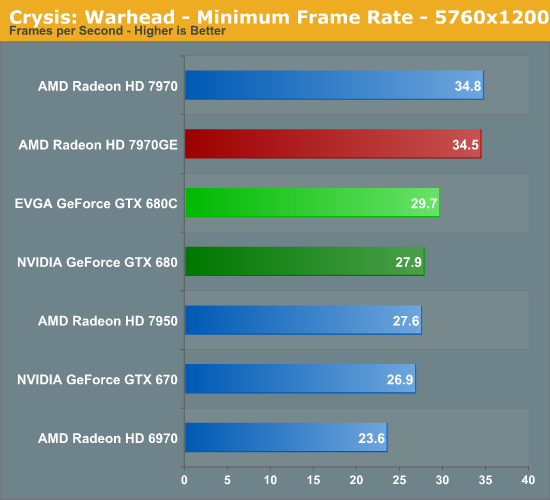
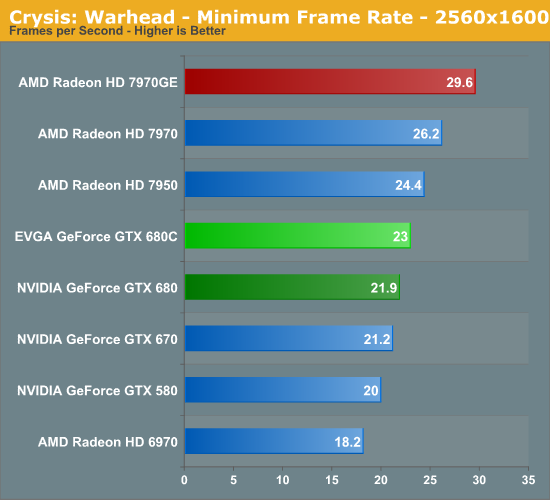
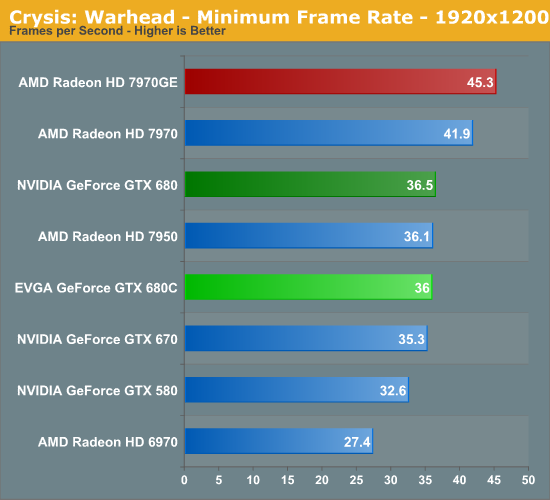 Starting off as always in Crysis, there’s actually not much to see. Since the reference GTX 680 is already memory bandwidth limited here and since the GTX 680 Classified doesn’t have a memory overclock, the factory core overclock does very little for its performance here.
Starting off as always in Crysis, there’s actually not much to see. Since the reference GTX 680 is already memory bandwidth limited here and since the GTX 680 Classified doesn’t have a memory overclock, the factory core overclock does very little for its performance here.
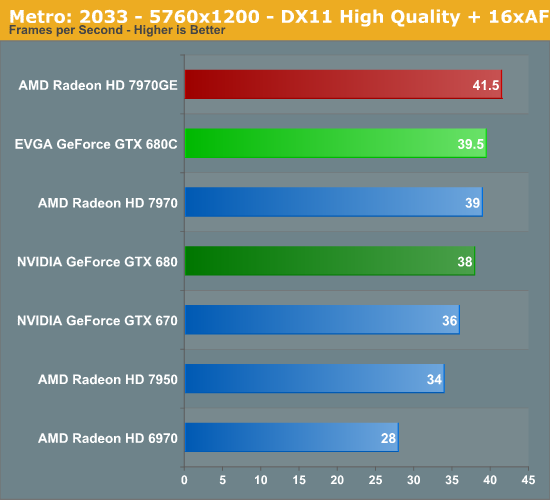
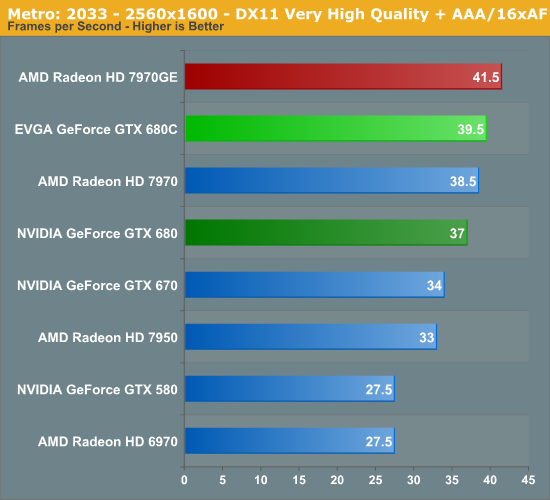
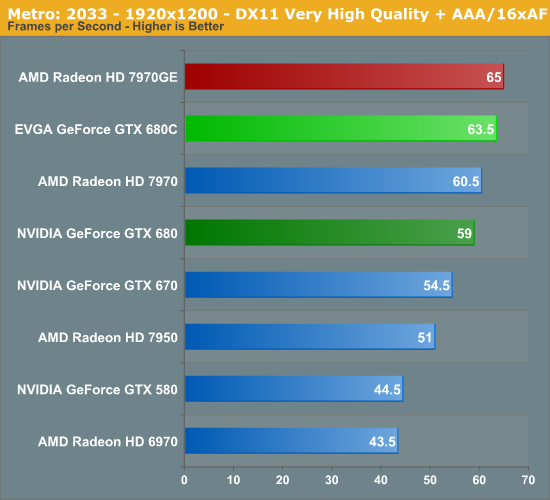


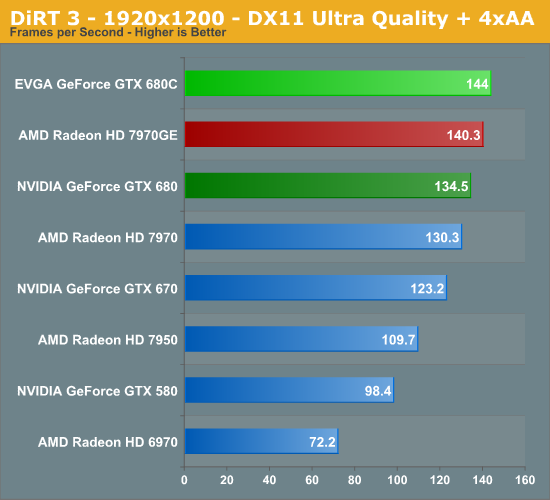




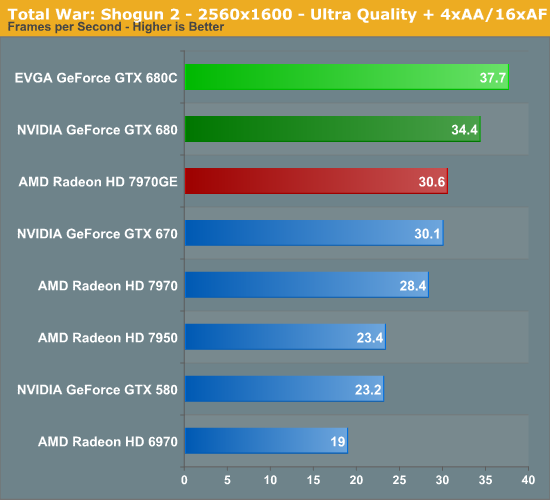
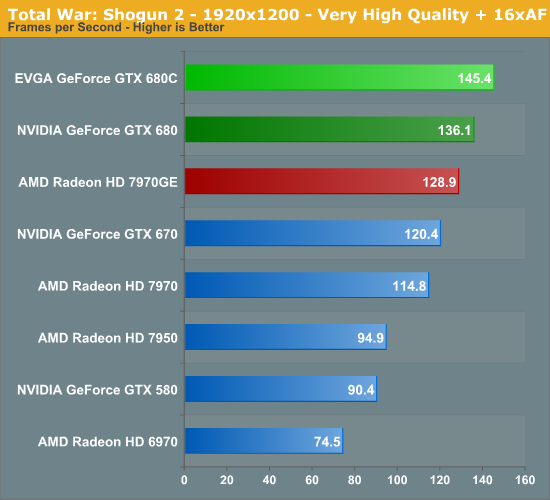
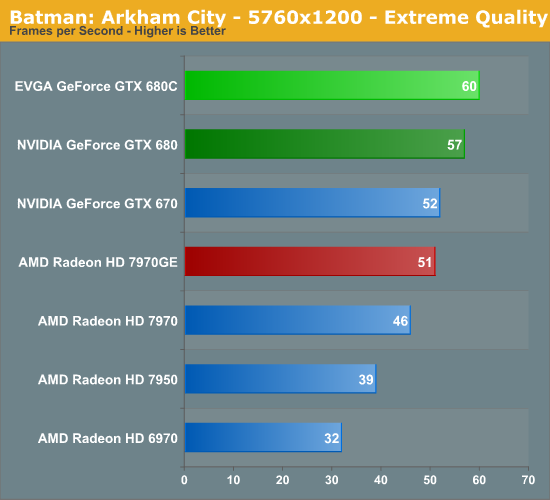
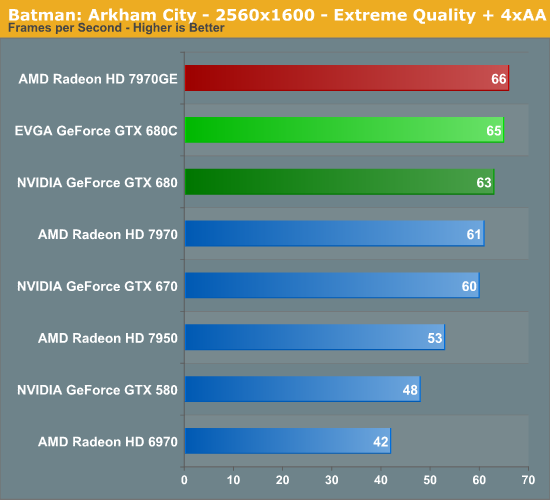
 Batman on the other hand doesn’t do the GTX 680 Classified any favors, which is a bit odd. 3-5% just isn’t what you expect here, since there’s no real evidence that the game is CPU or memory bandwidth bottlenecked.
Batman on the other hand doesn’t do the GTX 680 Classified any favors, which is a bit odd. 3-5% just isn’t what you expect here, since there’s no real evidence that the game is CPU or memory bandwidth bottlenecked.
FINAL THOUGHTS
out of the box the GTX 680 is a very impressive card. EVGA’s various touches such as 4GB of RAM, a larger cooler, a factory overclock, and of course additional VRM circuitry that leads to a higher stock power target, all serve to make the GTX 680 Classified a clearly better card than the reference GTX 680. Furthermore thanks in large part to EVGA’s binning there’s even more overclocking headroom to play with, leading us to reach a 1211MHz core clock without ever increasing its voltage. It’s a very good – if very expensive – GTX 680.by ryan smith
Nowhere is this embodied more than with our first card, EVGA’s GeForce GTX 680 Classified. In EVGA’s product hierarchy the Classified is their top of the line product, where they typically go all-out to make customized products to scratch the itch of overclockers and premium buyers alike. The GTX 680 Classified in turn is EVGA’s take on a premium GTX 680,What has EVGA seen fit to do with their fully-custom GTX 680, and does it live up to the hype and the price tag that comes with the Classified name? .
| EVGA GeForce GTX 680 Condensed Product Lineup | |||||
| EVGA GTX 680 Classified | EVGA GTX 680 FTW+ | EVGA GTX 680 SC | EVGA GTX 680 | ||
| Stream Processors | 1536 | 1536 | 1536 | 1536 | |
| Texture Units | 128 | 128 | 128 | 128 | |
| ROPs | 32 | 32 | 32 | 32 | |
| Core Clock | 1111MHz | 1084MHz | 1058MHz | 1006MHz | |
| Boost Clock | 1176MHz | 1150MHz | 1124MHz | 1058MHz | |
| Memory Clock | 6.008GHz GDDR5 | 6.008GHz GDDR5 | 6.208GHz GDDR5 | 6.008GHz GDDR5 | |
| Memory Bus Width | 256-bit | 256-bit | 256-bit | 256-bit | |
| Frame Buffer | 4GB | 4GB | 2GB | 2GB | |
| Price | $659 | $629 | $519 | $499 | |
NVIDIA usually turns out solid reference card designs. For their high-end single-GPU cards NVIDIA typically uses balanced designs that are reasonably quiet, reasonably cool, and have some degree of overclocking potential. On the other hand NVIDIA also tends to go conservative in some ways, with NVIDIA favoring blowers so that their reference cards work in most cases, and rarely overbuilding their cards in order to keep the manufacturing cost of the card down.
This is where custom cards come in. NVIDIA’s reference which leads to their partners creating custom products not only to differentiate themselves from each other, but to target specific niches that the reference design doesn’t do a good job of covering. Even just replacing the cooler while maintaining the reference board – what we call a semi-custom card – can have a big impact on noise, temperatures, and can improve overclocking. But at the end of the day there’s only so much you can do with NVIDIA’s reference boards, particularly when it comes to form factors and overclocking. This leads us to fully-custom cards.
Crysis, Metro, DiRT 3, Shogun 2, & Batman
Since the GTX 680 Classified doesn’t bring anything new to the table architecturally, we’ll keep our commentary on its stock performance brief. At stock it’s much like any other overclocked GTX 680 (factory or otherwise), with the only real room for differentiation being the greater amount of RAM and the higher power target. In practice the greater amount of RAM doesn’t make much of a difference in our single-GPU tests, as that much RAM is far more beneficial for the ultra-high resolutions of multi-monitor gaming, at which point you’re going to need a second card to provide the necessary horsepower.
The higher default power target on the other hand is quite interesting. The GTX 680 Classified will hit its top boost bin almost all of the time thanks to the generous power target, something the reference GTX 680 can have trouble with even at stock. So although reference cards can be overclocked to this level, it doesn’t necessarily mean they’ll match the GTX 680 Classified’s boost clocks in that state.





















FINAL THOUGHTS
out of the box the GTX 680 is a very impressive card. EVGA’s various touches such as 4GB of RAM, a larger cooler, a factory overclock, and of course additional VRM circuitry that leads to a higher stock power target, all serve to make the GTX 680 Classified a clearly better card than the reference GTX 680. Furthermore thanks in large part to EVGA’s binning there’s even more overclocking headroom to play with, leading us to reach a 1211MHz core clock without ever increasing its voltage. It’s a very good – if very expensive – GTX 680.by ryan smith

No comments:
Post a Comment